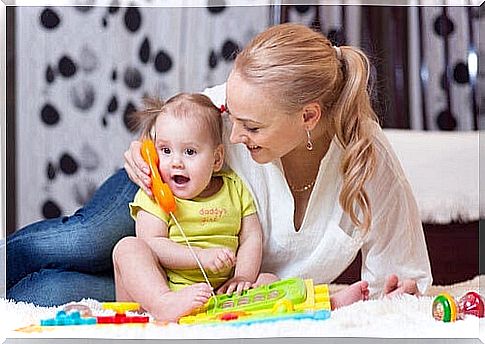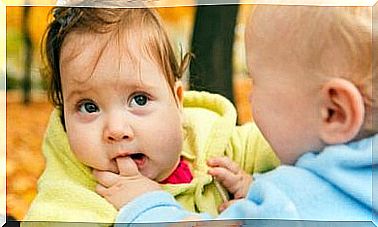How To Detect Language Disorders In Children

Language disorders in children can manifest themselves in delays or difficulty learning to speak. In this article, we take a closer look at how to detect language disorders in children.
Children who have a language disorder may have difficulty communicating with others and making themselves understood. This is directly related to expressive language disorders.
On the other hand, children who struggle to understand what others are saying may have a receptive language disorder.
The language develops naturally in infants and young children. The process begins from birth.
In order for a child to acquire his or her mother tongue, he or she must be able to hear, understand and remember. The child must also develop the ability to put together phrases and sentences.
Causes of language disorders in children
According to statistics, about 1 in 20 children show symptoms of a language disorder. When the cause of the child’s difficulties is unknown, the diagnosis of speech and language disorder is used.
Difficulties in processing and understanding languages usually begin to appear at the age of four. Some mixed language disorders can be due to things like brain damage.
Language disorders can also occur due to developmental delays or damage to the central nervous system, so-called aphasia.
When this type of disorder occurs, speech and language do not develop normally. The child may acquire certain language skills while struggling with others.
How to detect language disorders
A child who has a language disorder often shows one or more of the symptoms below. These can be severe or mild.
Children with a receptive language disorder may have difficulty understanding messages and will show some of the following signs:
- Difficulty understanding what others are saying
- Problems following instructions
- Difficulty organizing thoughts and behavior

On the other hand, children with an expressive language disorder tend to have difficulty communicating what they are thinking or asking for something they need.
Here are some common signs:
- Difficulty using the right word in a phrase or sentence. They can only use short, simple phrases.
- Word order in a phrase may not be correct.
- They have a hard time finding the right words to say what they mean and they often show verbal tics.
- Their vocabulary is below the level that can be expected in their age group.
- They use certain phrases repeatedly.
- They use incorrect inflections and word forms.
Types of speech and language disorders
There are many different language disorders that can occur in children. Many of these are fairly easy to spot.
- Stuttering: Stuttering during childhood is a problem that can be diagnosed and treated early in life. It is a change in the rhythm and flow of speech, which is characterized by the repetition of syllables, words or phrases.
- Language delay: The diagnosis of a possible delay in language acquisition is something that only a specialist can make. With early diagnosis and intervention, it is possible to avoid lasting effects.
- Speech delay: This can be observed in both expression and comprehension.
- Dyslala in infants: This is diagnosed when the child is unable to pronounce sounds properly, a so-called articulation abnormality, due to structural changes in the organs he or she uses to speak.
- Aphonia: A common problem in children and adolescents is the inability to produce certain sounds. This may be due to an illness or abnormal speech patterns.
- Pronunciation difficulties: There are some sounds that children usually learn to pronounce later than others. However, some children have particular difficulty articulating sounds such as the letter “R” (rhotacism) or the “S” sound (commonly known as reading).
- Deafness: Some children are born with damage to the outer, middle or inner ear or the auditory nerve. This makes it difficult for them to hear and understand spoken language.

The link between breathing and speech
Breathing and speech are closely linked. Knowing how children breathe can help them express themselves effectively.
This phenomenon can be linked to respiratory disorders, which also affect speech. Some disorders, such as aphonia and vocal cord injuries, can be caused by an abnormal breathing technique.
When a child breathes incorrectly, he or she breathes in less air. This gives the voice less power and makes it more difficult to produce a complete set of sounds.
If you detect language disorders in children early and start treatment in time, you can usually avoid lasting effects.
Pay attention when your child starts talking. If you notice anything unusual, talk to your doctor so that you can take the best measures.









